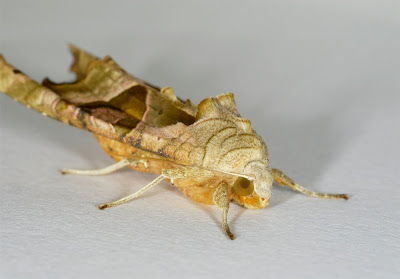Status: Common throughout the UK.
'To-meander-forth (?), Scissor-like'
(Evergestis = possibly from the Latin 'evergere' = to send out/to meander forth, forficalis = shear/scissor-like: Latin).
Normally, this species holds its wings in a tent-like posture (not shown in the photo below). This; and the sharp diagonal lines running from the wing-tips; are the inspiration for the species name forficalis (scissor-like).
 Note: atypical posture - normally rests with wings tented.
Note: atypical posture - normally rests with wings tented.Flight Period: Two broods - first from May to June, second brood from late July to September.
Foodplants: Plants of the Brassicaceae (cabbage) family.















.jpg)























